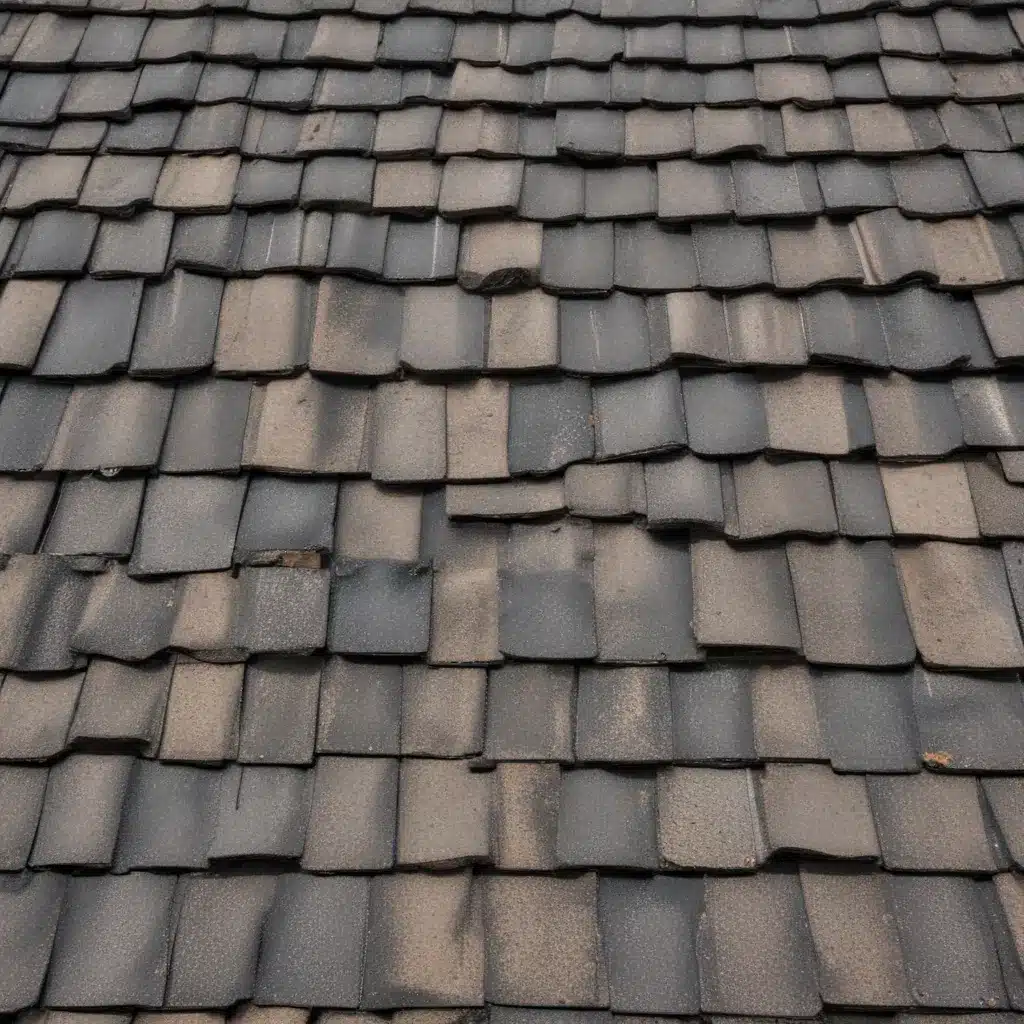
Understanding the Importance of Roof Ventilation and Moisture Management
As a seasoned roofing professional, I’ve seen firsthand how crucial proper roof ventilation and moisture control can be in preventing costly and damaging condensation issues. Excessive moisture buildup within a roofing system can lead to a wide range of problems, from weakening of roofing materials to the growth of mold and mildew. In this comprehensive guide, we’ll explore the key principles of roof ventilation and moisture management, equipping you with the knowledge to safeguard your home or commercial property against these common roofing challenges.
The Causes of Roof Condensation
Condensation occurs when warm, moist air encounters a cooler surface, causing the water vapor to convert into liquid water. In the context of roofing systems, this can happen when warm, humid air from the living space below permeates the insulation and encounters the cooler underside of the roof decking or sheathing.
Several factors can contribute to the development of roof condensation, including:
-
Inadequate Insulation: Insufficient or improperly installed insulation can allow warm, moist air to reach the cooler roof surfaces, leading to condensation.
-
Improper Ventilation: Inadequate airflow through the attic or roof cavity can prevent the efficient removal of excess moisture, resulting in condensation buildup.
-
Thermal Bridging: Certain building materials, such as metal fasteners or structural members, can act as “thermal bridges,” allowing heat to transfer more easily and creating cold spots where condensation can form.
-
Roof Design and Slope: Low-slope or flat roofs are more susceptible to condensation issues, as the reduced airflow and lack of a steeper pitch can inhibit the natural drainage of moisture.
-
Climate and Regional Factors: Regions with high humidity, frequent temperature fluctuations, or prolonged cold periods are more prone to roof condensation problems.
Understanding the root causes of roof condensation is the first step in developing effective mitigation strategies.
Strategies for Preventing Roof Condensation
To address the issue of roof condensation, a multifaceted approach is often required, focusing on both ventilation and moisture control. Let’s explore some proven strategies:
Optimizing Roof Ventilation
Proper roof ventilation is essential for maintaining a healthy and moisture-free roofing system. Consider the following ventilation techniques:
-
Ridge and Soffit Vents: Incorporating a balanced system of ridge and soffit (eave) vents allows for effective air circulation, promoting the removal of warm, moist air from the attic or roof cavity.
-
Gable Vents: Strategically placed gable vents can supplement the ridge and soffit ventilation, creating cross-ventilation and enhancing airflow.
-
Mechanical Ventilation: In some cases, the addition of powered attic fans or exhaust fans can help remove excess moisture and maintain the desired airflow.
-
Ventilation Calculations: Ensure that the total net free vent area (NFVA) of your roof ventilation system meets or exceeds the recommended standards, which are typically based on the size of the attic or roof cavity.
Improving Moisture Control
Addressing the root causes of moisture buildup is crucial for preventing condensation issues. Consider the following moisture control strategies:
-
Proper Insulation: Upgrade or retrofit the insulation in your attic or roof cavity to meet or exceed the recommended R-values for your climate zone. This helps maintain a consistent temperature differential between the living space and the roof surfaces.
-
Air Sealing: Carefully seal any air leaks or penetrations in the building envelope, such as around chimneys, vents, and electrical fixtures, to minimize the introduction of warm, moist air into the roofing system.
-
Vapor Barriers: Assess the need for a properly installed and sealed vapor barrier, which can help prevent the migration of moisture from the living space into the roofing assembly.
-
Roof Deck Ventilation: In some cases, providing additional ventilation directly beneath the roof deck, such as through the use of rigid foam insulation with integral air spaces, can improve moisture control.
-
Roof Material Selection: Choosing roofing materials with high solar reflectance (SRI) values, such as light-colored or metal roofing, can help reduce heat transfer and mitigate the potential for condensation.
-
Bathroom and Kitchen Ventilation: Ensure that all bathroom and kitchen exhaust fans are properly vented to the exterior, rather than simply discharging into the attic or roof cavity.
By addressing both ventilation and moisture control, you can create a balanced and resilient roofing system that effectively mitigates the risk of damaging condensation.
Monitoring and Maintaining Roof Ventilation and Moisture Control
Ongoing monitoring and maintenance are essential for the long-term performance of your roof’s ventilation and moisture control systems. Here are some key considerations:
-
Regular Inspections: Conduct periodic inspections, paying close attention to any signs of moisture buildup, mold growth, or ventilation obstructions.
-
Attic Humidity Monitoring: Consider installing a hygrometer in the attic to monitor humidity levels and identify any fluctuations that may indicate ventilation or moisture control issues.
-
Ventilation System Maintenance: Ensure that all vents, fans, and associated components are functioning correctly and free from debris or obstructions.
-
Insulation Upgrades: As building codes and energy-efficiency standards evolve, consider upgrading the insulation in your attic or roof cavity to maintain optimal moisture control.
-
Roof Replacement Opportunities: When it’s time to replace your roof, take advantage of the opportunity to thoroughly evaluate and improve the ventilation and moisture control systems.
By adopting a proactive approach to roof ventilation and moisture management, you can safeguard your property against the damaging effects of condensation and enjoy a long-lasting, high-performing roofing system.
Conclusion
Proper roof ventilation and moisture control are essential for the overall health and longevity of your roofing system. By understanding the root causes of condensation, implementing proven mitigation strategies, and maintaining your roof’s ventilation and moisture control systems, you can effectively prevent costly and disruptive issues. As a seasoned roofing professional, I encourage you to apply the insights and recommendations outlined in this article to ensure the optimal performance and protection of your roof. For more information or personalized guidance, please visit https://www.roofersinnorthampton.co.uk/.

